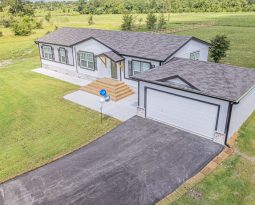Manufactured Housing Industry Poised to Help Solve America’s Quality Affordable Housing Crisis
Manufactured home shipments in 2021 totaled 105,775 homes, the highest yearly total since 2006, commendable considering pandemic-related headwinds, including supply chain disruptions, workforce issues, and inflationary pressures. Increased shipments followed in February, March, and April 2022, with the April Manufactured Housing Institute (MHI), projected seasonally adjusted annual rate (SAAR) at 124,424 homes.
The overall outlook and favorable expectations would indicate that manufactured housing is on the cusp of providing homebuyers an unprecedented supply of high-quality affordable housing that is not necessarily available with any other housing type. That optimism is corroborated by enhanced capital expenditures and manufactured home plant investment.
Following is a “look-back” to the past in determining what the industry is capable of providing as well as the drawbacks existing today that were not prevalent previously.
At Their Peak, Manufactured Homes Accounted for 60% of New Single-Family Houses in the United States
At one time, manufactured homes were the leader in providing housing to U.S. homebuyers. Manufactured homes (aka “mobile homes) briefly dominated the U.S. housing market during the 1960s. By 1972 these homes – not just mobile homes but also small-scale modular houses – accounted for some 60% of all new single-family homes produced nationwide.
Today there are 45,000 to 50,000 …approximate number of manufactured home communities (mobile home parks) in the U.S. (exact number unknown), with 4.2 million homes in those communities. It is estimated that one-third of these homes were sited in mobile home communities (rental parks) where lower-income families and seniors with fixed incomes could enjoy the homeownership lifestyle.
Over the past two decades, there have been scant few manufactured home communities developed in the U.S. A result of zoning prohibitions by land-use regulators results in rare instances of home space availability. Today, the placement of new manufactured homes on private property is the most common installation.
The manufactured housing industry is addressing the individual home placement land use impediments by developing homes that meet the requirements where zoning issues negate home placement by developing manufactured homes and mortgage financing programs that address those local issues, such as exteriors that are indistinguishable from a site-built and mortgage programs with these requirements. An example is the Fannie Mae MH Advantage labeled home.
One of the key themes of the 2022 site-built housing market is that a lot of people want to buy a new home and a lot of sellers want to sell, but it’s becoming increasingly difficult to do either because of record-high prices, rising mortgage rates, and increased competition.
U.S Census stats show that the average sales price for a new manufactured home increased – from $82,900 to $123,200 (not including land costs) – during the pandemic. Meanwhile, the average sales price of a site-built home has surged 31.2 % to $570,300 (including land costs), Reuters reported.
It is unreasonable to expect that manufactured home sales will ever achieve levels of a half-century ago, but the manufactured housing industry is poised to provide homebuyers a wide path to high-quality affordable housing going forward that is at least equal, and often superior, to a comparable site-built at half the price.







